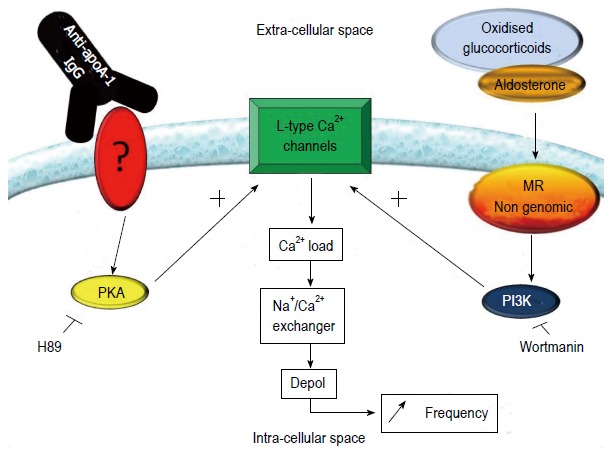Figure 4.

Current understanding of the mechanism by which autoantibodies against apolipoprotein A-1 IgG elicit chronotropic responses in nenonatal rat cardiomyocytes. Stimulation of the mineralocorticoid receptor (MR), either by aldosterone or oxidized glucocorticoids, induces the downstream activation of PI3K, which in turn activates L-type calcium channels. Anti-apoA-1 IgG has been shown to sensitize the L-type calcium channel in a protein kinase A (PKA)-dependent manner. The PI3K and PKA activated pathways alone are not sufficient to induce an increase in basal contraction rate, when simultaneously activated L-type calcium channels are activated, leading to an increase in intracellular Ca2+. This signal is amplified by the Na+/Ca2+ exchanger, leading to an increase of the prepotential slope of the cells, which ultimately translates into an increased contraction rate.
